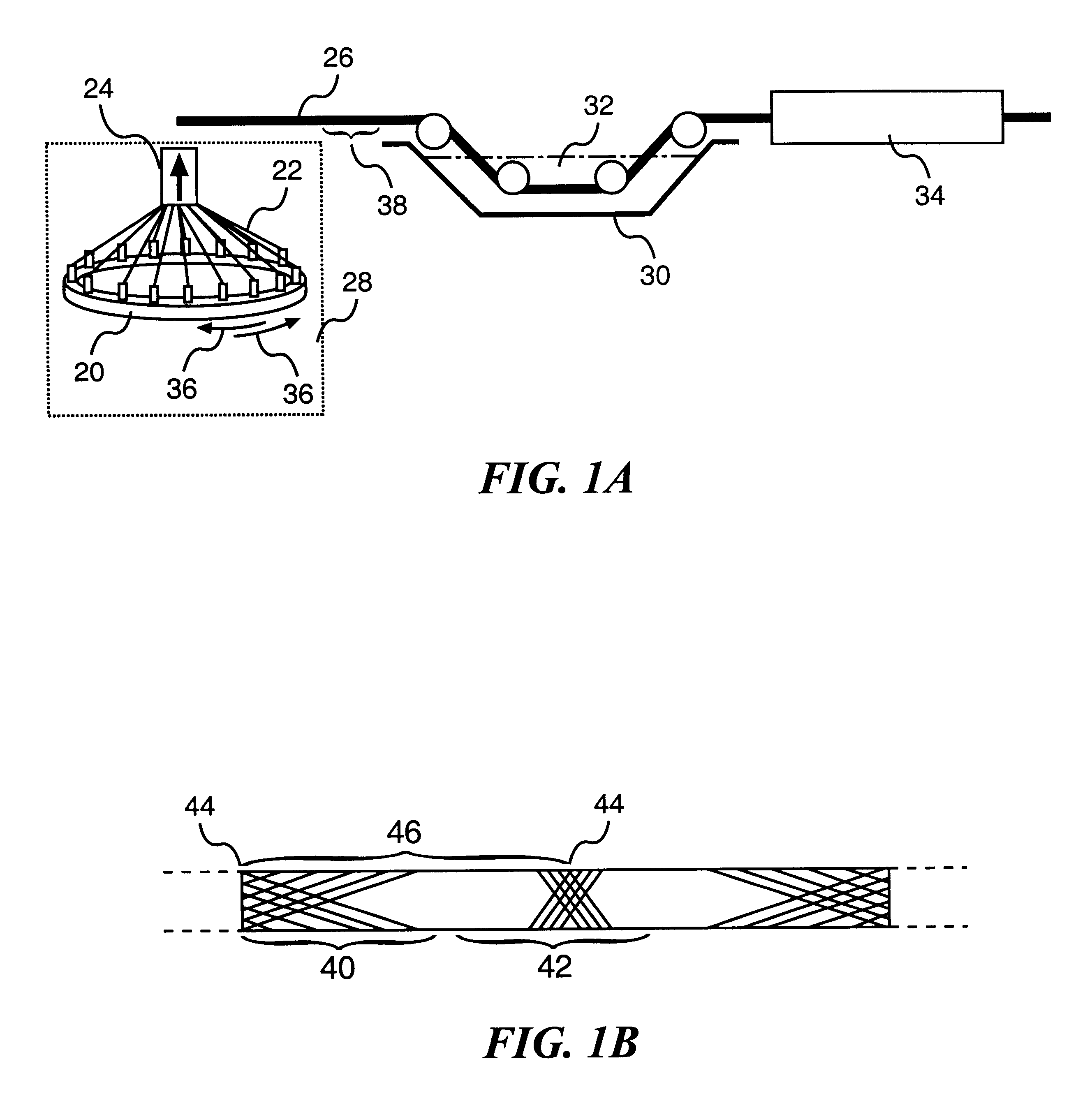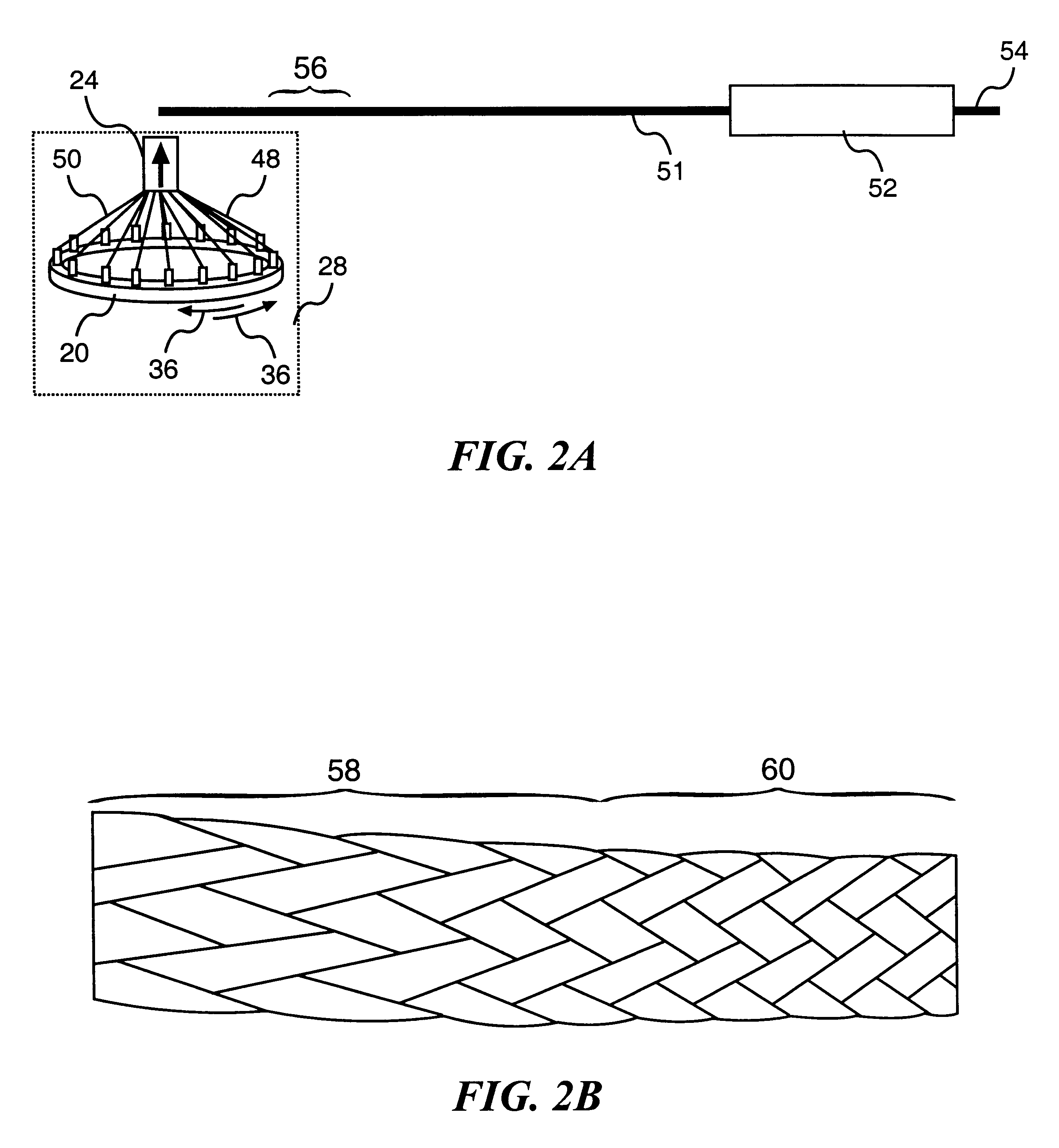Fiber-reinforced composite product with graded stiffness
a composite material and fiber reinforcement technology, applied in the field of fiber reinforcement composite materials with graded stiffness, can solve the problems of mastication requiring consideration of fatigue failure, stress concentration at the apical end of the tooth, and increased stress in the portion of the canal wall. achieve the effect of varying stiffness
- Summary
- Abstract
- Description
- Claims
- Application Information
AI Technical Summary
Benefits of technology
Problems solved by technology
Method used
Image
Examples
example 1
Referring to FIG. 1A, spools 20 of metallic, ceramic or polymeric fibers 22 are interlaced into a preform 26 with or without a mandrel or core. After braiding in the braiding machine 28, the preform is transferred to a resin bath 30 containing unreacted resin 32. Once the unreacted resin has impregnated the fibers in the preform, it is transferred to a curing die 34 of the required diameter wherewith the resin is cured to form the polymeric component or matrix of the fiber-reinforced composite post. The polymeric component may be any kind of thermosetting resin such as epoxy, polyester, or molten or solvent dissolved thermoplastic resin.
According to the conventional method, the take-up speed N1 (shown by arrow 24) and spindle speed N2 (shown by arrow 36) has a fixed ratio and hence, the angle of braiding is fixed. According to the present invention, the ratio between the take-up speed N1 (24) and spindle speed N2 (36) is changed continuously in order to vary the angle of braiding. F...
example 2
FIG. 2A shows a variation to the braiding method. In addition to the metallic, polymeric or ceramic reinforcement fibers 48, at least another set of the fibers is a polymeric material 50. During the braiding process, the ratio between the take-up speed N1 24 and spindle speed N2 36 is changed continuously in order to vary the braiding angle. The braided preform 51 is then transferred to mold 52 for compression molding at required temperature at which specific set of polymeric fibers melt and impregnate the reinforcement fibers. The final product 54 is one having varying stiffness along its length. Section 56 of the preform would have braided fibers similar to the ones shown in FIG. 1B, except those additional polymeric fibers are also intertwined. FIG. 2B shows a photograph of a preform dental post with a continual variation in the braid angles. Therefore, the stiffness in segment 58 is generally higher than the segment in section 60.
example 3
In a conventional filament winding method, a fiber or filament or tape 62 is wound around a core or mandrel 64. The filament may be made of metal, polymer or ceramic. The mandrel may be metal, ceramic or polymer. According to the present invention, the filament is wound at varying orientation with reference to the longitudinal axis of the core. A thermosetting matrix may also be provided according to conventional methods. The resultant product again has smaller angle and higher stiffness in segment 66, and larger angle and lower stiffness in segment 68.
PUM
 Login to View More
Login to View More Abstract
Description
Claims
Application Information
 Login to View More
Login to View More - R&D
- Intellectual Property
- Life Sciences
- Materials
- Tech Scout
- Unparalleled Data Quality
- Higher Quality Content
- 60% Fewer Hallucinations
Browse by: Latest US Patents, China's latest patents, Technical Efficacy Thesaurus, Application Domain, Technology Topic, Popular Technical Reports.
© 2025 PatSnap. All rights reserved.Legal|Privacy policy|Modern Slavery Act Transparency Statement|Sitemap|About US| Contact US: help@patsnap.com



